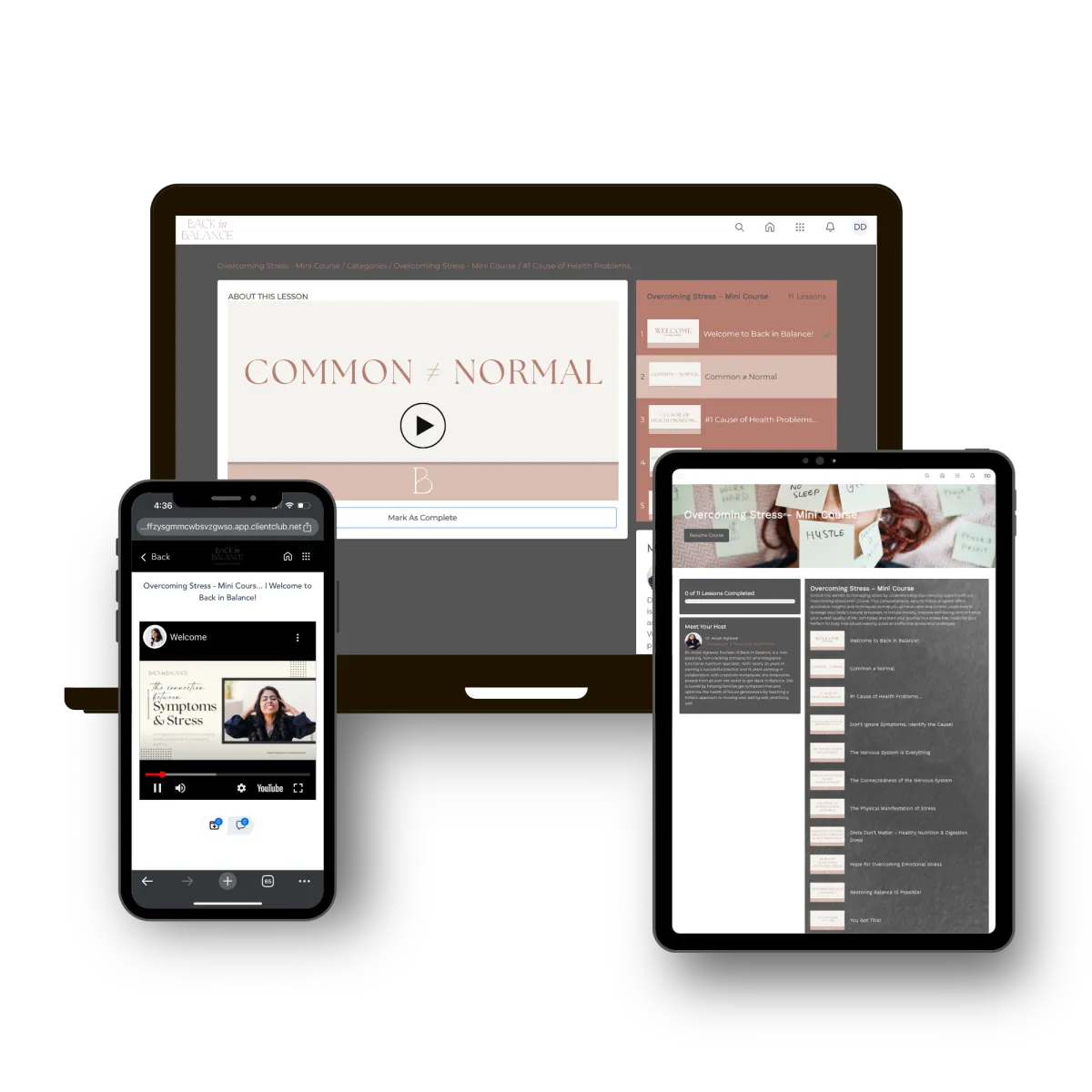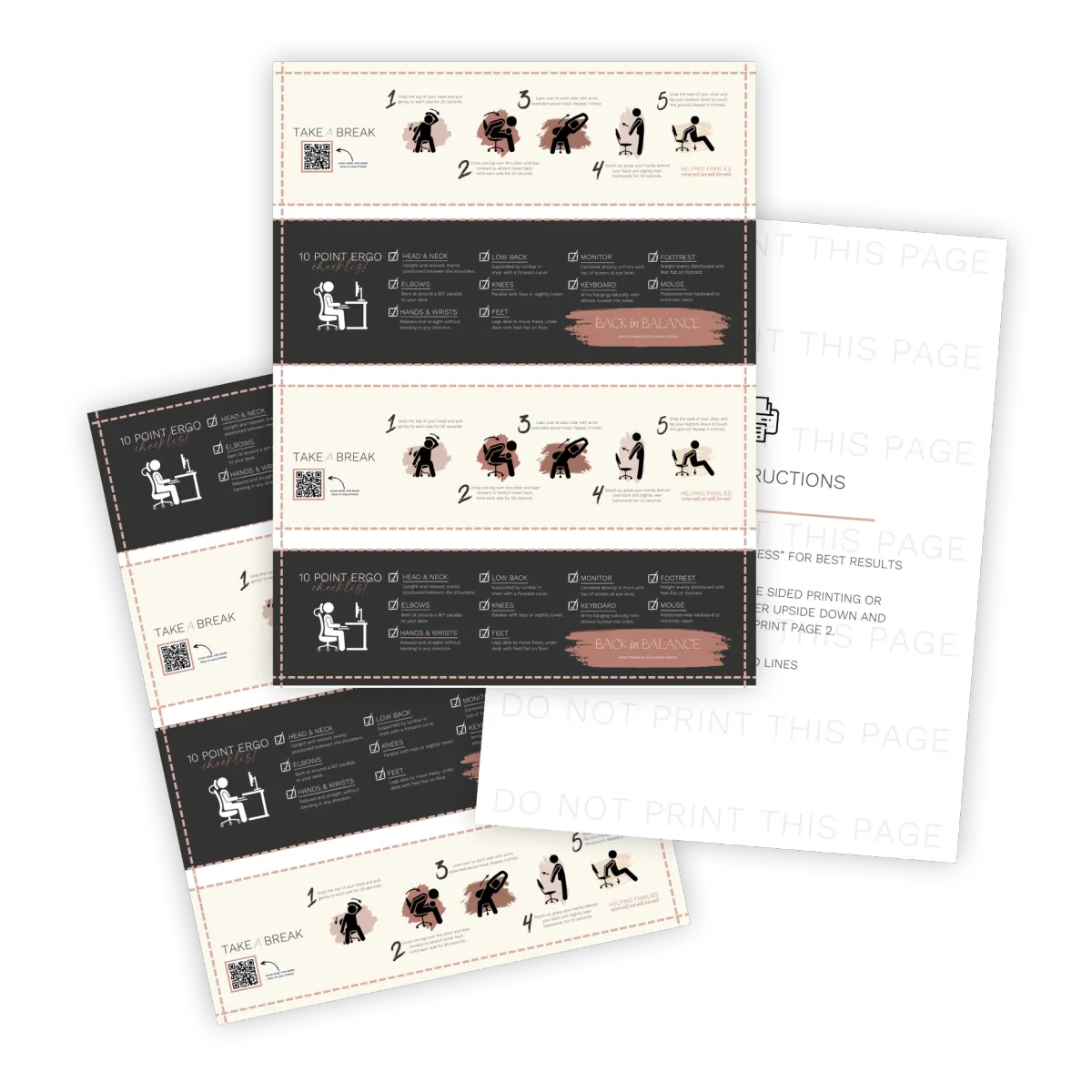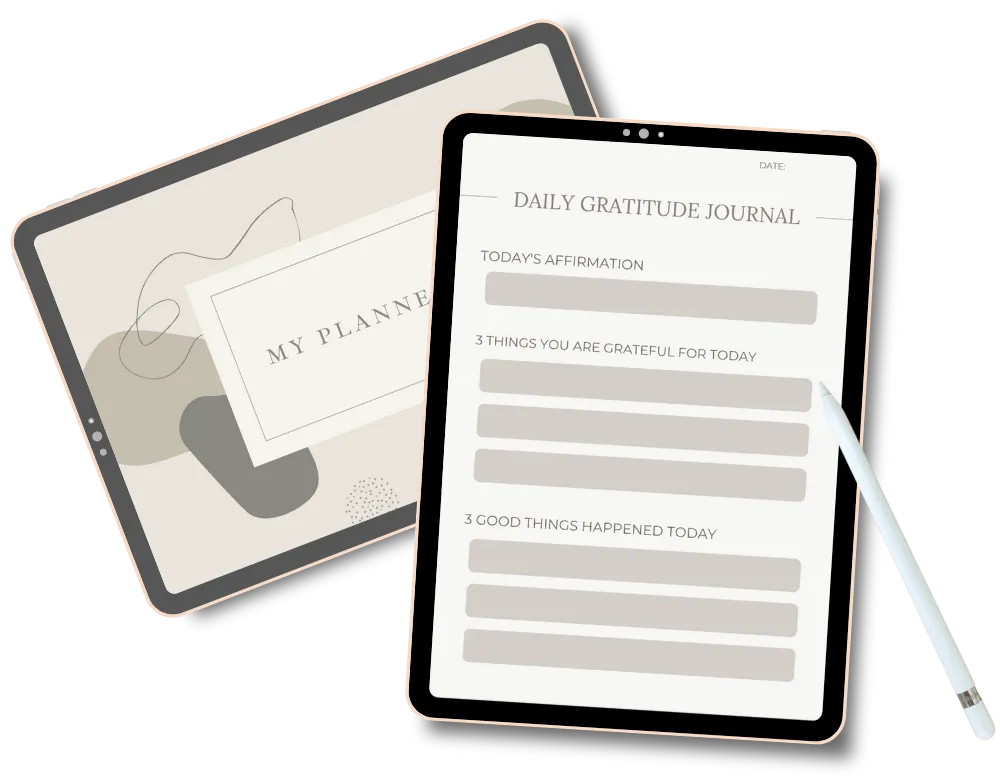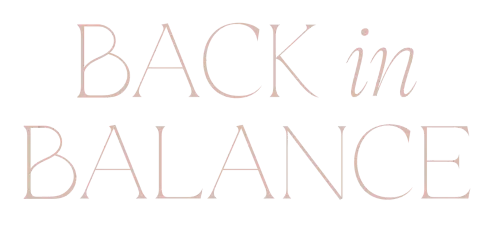

Apple Trackpad

Apple Keyboard


Are you wanting to get pregnant or expecting a little one? Get out free checklist today. This Ultimate Fertility and Pregnancy Checklist gives you everything you need to know for optimized health.

Unlock the secrets to managing stress with our Overcoming Stress Mini Course. Learn how to leverage your nervous system to reduce anxiety and improve well-being. Join today for quick, effective stress relief strategies. Perfect for busy individuals seeking a healthier, stress-free life.

Are you wanting to get pregnant or expecting a little one? Get out free checklist today. This Ultimate Fertility and Pregnancy Checklist gives you everything you need to know for optimized health.

Do you ever feel stiff and sore from sitting all day? If so, download our printable bookmark and walk through the 10 point ergonomic checklist to help you get back in balance from anywhere!





Why Low Blood Pressure Might Be a Bigger Health Warning Than You Think
Welcome! I’m Dr. Anjali, founder of Back and Balance, non-cracking chiropractor and integrative functional nutrition specialist. I help families and companies optimize their health by supporting how they move, eat, and live — especially through the five trimesters of pregnancy and postpartum.
Today, we’re diving into a commonly overlooked sign of chronic stress: low blood pressure and low heart rate. It may sound harmless — even healthy — but let’s unpack why it might be a warning sign instead.
Not All Low Numbers Are Good
While high blood pressure and rapid heart rate get a lot of attention as red flags, we rarely talk about what it means when these numbers are too low.
I’ve personally experienced this — especially during a season of unexpected stress. While recording a stress management course, I noticed ongoing sinus congestion. I initially thought it was allergies or immune-related, but no supplements were helping. That’s when I realized: it was actually mental stress showing up physically.
Stress Isn’t Just Mental
When we think about stress, we usually think of anxiety or overwhelm. But stress affects us physically, chemically, and emotionally.
Physical stress includes how much (or how little) we move.
Chemical stress is everything from what we eat to what we breathe.
Emotional/mental stress stems from our thoughts, worries, and emotional overload.
When these stressors build up, they activate our sympathetic nervous system — aka fight-or-flight mode.

Learn all about stress in our FREE Stress mini course!
Understanding the Freeze Response
Normally, in fight-or-flight mode, our heart rate and blood pressure rise to help us deal with perceived danger. But when that stress is prolonged or chronic, the body may enter a freeze response instead — a state of shutdown or overwhelm.
And here’s the kicker: in freeze mode, your blood pressure and heart rate drop.
You may feel fatigued, lightheaded, cold, or emotionally numb. For many, this becomes their “normal,” especially when it goes unnoticed.
My Experience with Low Blood Pressure
Even throughout my pregnancies, my consistently low blood pressure wasn’t flagged. But the signs were there: nosebleeds when dehydrated, lightheadedness after exertion, and unexpected fatigue.
What I learned is that these weren’t random — they were my body signaling that it was stuck in chronic freeze mode.
Recognizing the Signs in Kids and Adults
This also applies to children. After physical exertion (like hiking or sports), they may not “feel” hungry, but their bodies need fuel and restoration. If we support them early with good nutrition and awareness, we can help prevent deeper imbalances later.
A Traffic Analogy for Stress
Think of your nervous system like traffic on a freeway:
Parasympathetic (rest/digest) = smooth-flowing traffic.
Sympathetic (fight/flight) = sirens cause you to pull over briefly.
Freeze mode = constant sirens. You’re stuck on the shoulder. Traffic — and your body — can’t move.
This chronic stress standstill interrupts everything: digestion, breath, energy, mood, and clarity.
How to Support Your Nervous System
Start by recognizing what your stress “tells” look like. For me, it was sinus congestion. For others, it’s fatigue, low energy, digestive issues, or emotional numbness.
The solution? Learning to regulate your nervous system, support your adrenal health, and create balance across body, mind, and lifestyle.
Final Thoughts
Low blood pressure might feel like a non-issue — but if you're frequently tired, foggy, dizzy, or emotionally numb, it could be a major clue.
Let’s stop dismissing these signs and start tuning into what our bodies are really saying. If this resonates with you, check out the free stress management resource linked below. I’d love to support you on your journey.

Why Low Blood Pressure Might Be a Bigger Health Warning Than You Think
Welcome! I’m Dr. Anjali, founder of Back and Balance, non-cracking chiropractor and integrative functional nutrition specialist. I help families and companies optimize their health by supporting how they move, eat, and live — especially through the five trimesters of pregnancy and postpartum.
Today, we’re diving into a commonly overlooked sign of chronic stress: low blood pressure and low heart rate. It may sound harmless — even healthy — but let’s unpack why it might be a warning sign instead.
Not All Low Numbers Are Good
While high blood pressure and rapid heart rate get a lot of attention as red flags, we rarely talk about what it means when these numbers are too low.
I’ve personally experienced this — especially during a season of unexpected stress. While recording a stress management course, I noticed ongoing sinus congestion. I initially thought it was allergies or immune-related, but no supplements were helping. That’s when I realized: it was actually mental stress showing up physically.
Stress Isn’t Just Mental
When we think about stress, we usually think of anxiety or overwhelm. But stress affects us physically, chemically, and emotionally.
Physical stress includes how much (or how little) we move.
Chemical stress is everything from what we eat to what we breathe.
Emotional/mental stress stems from our thoughts, worries, and emotional overload.
When these stressors build up, they activate our sympathetic nervous system — aka fight-or-flight mode.

Learn all about stress in our FREE Stress mini course!
Understanding the Freeze Response
Normally, in fight-or-flight mode, our heart rate and blood pressure rise to help us deal with perceived danger. But when that stress is prolonged or chronic, the body may enter a freeze response instead — a state of shutdown or overwhelm.
And here’s the kicker: in freeze mode, your blood pressure and heart rate drop.
You may feel fatigued, lightheaded, cold, or emotionally numb. For many, this becomes their “normal,” especially when it goes unnoticed.
My Experience with Low Blood Pressure
Even throughout my pregnancies, my consistently low blood pressure wasn’t flagged. But the signs were there: nosebleeds when dehydrated, lightheadedness after exertion, and unexpected fatigue.
What I learned is that these weren’t random — they were my body signaling that it was stuck in chronic freeze mode.
Recognizing the Signs in Kids and Adults
This also applies to children. After physical exertion (like hiking or sports), they may not “feel” hungry, but their bodies need fuel and restoration. If we support them early with good nutrition and awareness, we can help prevent deeper imbalances later.
A Traffic Analogy for Stress
Think of your nervous system like traffic on a freeway:
Parasympathetic (rest/digest) = smooth-flowing traffic.
Sympathetic (fight/flight) = sirens cause you to pull over briefly.
Freeze mode = constant sirens. You’re stuck on the shoulder. Traffic — and your body — can’t move.
This chronic stress standstill interrupts everything: digestion, breath, energy, mood, and clarity.
How to Support Your Nervous System
Start by recognizing what your stress “tells” look like. For me, it was sinus congestion. For others, it’s fatigue, low energy, digestive issues, or emotional numbness.
The solution? Learning to regulate your nervous system, support your adrenal health, and create balance across body, mind, and lifestyle.
Final Thoughts
Low blood pressure might feel like a non-issue — but if you're frequently tired, foggy, dizzy, or emotionally numb, it could be a major clue.
Let’s stop dismissing these signs and start tuning into what our bodies are really saying. If this resonates with you, check out the free stress management resource linked below. I’d love to support you on your journey.
Sign up for our no spam newsletter.
Stay Connected
©2025 Back In Balance Health. All Rights Reserved. – WEBSITE By: Danielle Damrell Creative Collective, Inc.


